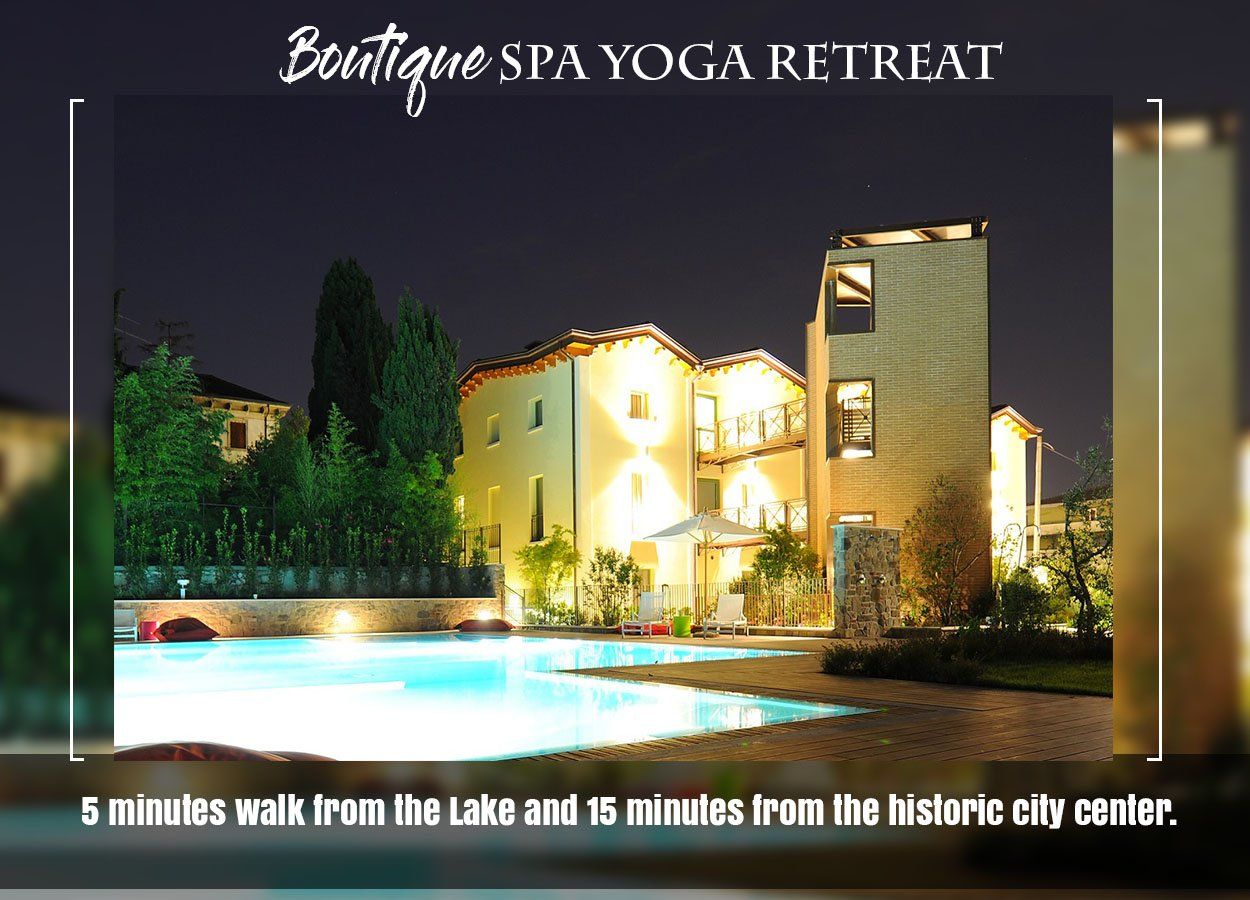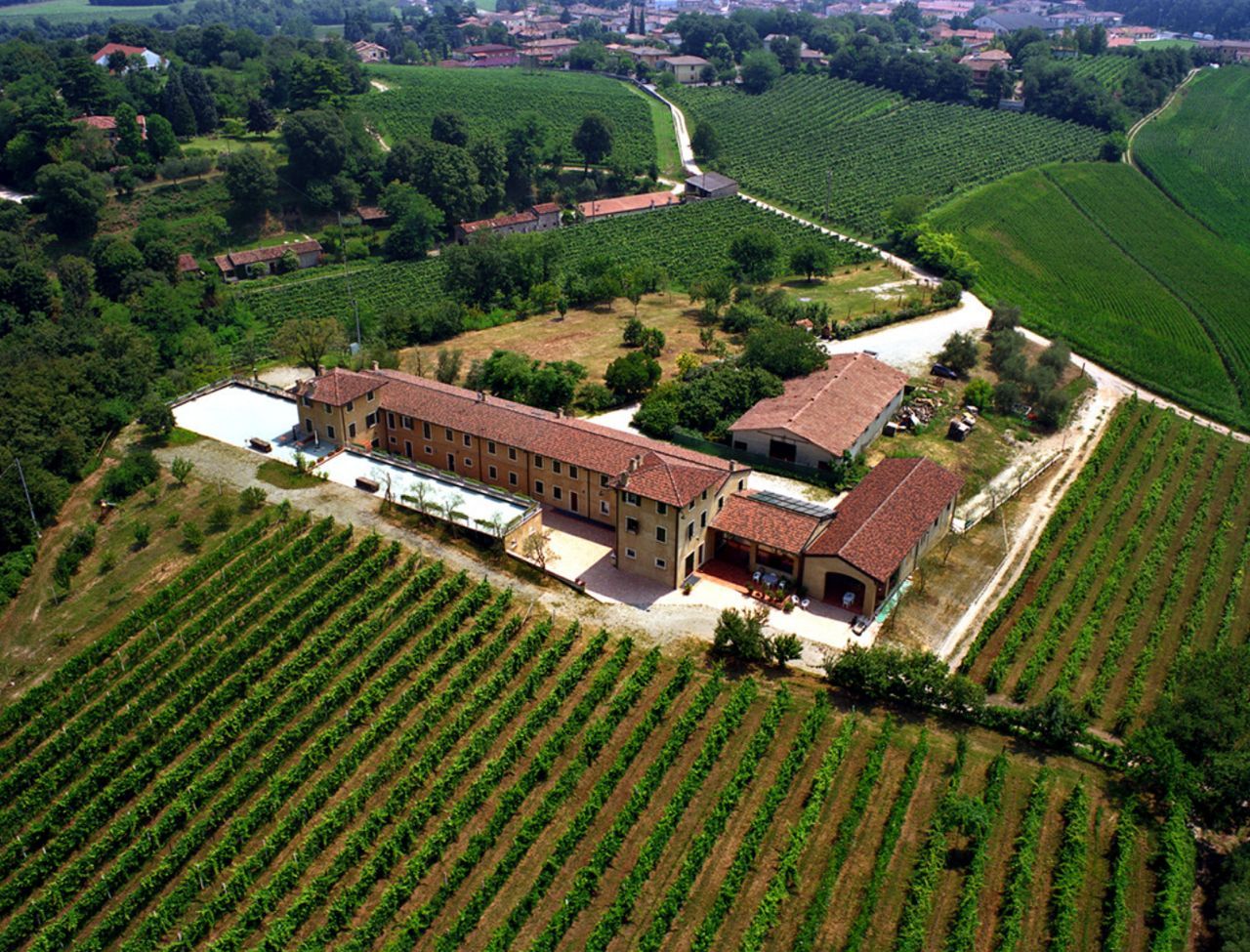Audio-Guide
PESCHIERA DEL GARDA TOWN
1. Welcome to Peschiera del Garda
With stunning scenery and plenty of stories to tell, Peschiera del Garda is a beautiful town, one that offers a rich history, and a perfect location for a Yoga with Perumal retreats in Italy. During the Bronze Age, it was a metallurgical centre but soon became a fortress for Romans and had equal important for the French, Venetians, and during the Habsburg Empire.
While other Italian cities have fortified structures, very few can compete with Peschiera when it comes the eras in which these structures were important. For example, Scaligero Castle was erected in the 13th century on the remains of an ancient Roman Fortress. Three centuries later, the fortress was designed with a pentagonal shape and built during the Republic of Venice - this pentagonal design can still be seen today. Moving through time, today’s fortress was completed by Napoleon Bonaparte and then the Habsburg domination. Surrounded by water completely, it’s the only current example of a fortified city - imagine this as the backdrop for your Lake Garda yoga retreat!
With stunning scenery and plenty of stories to tell, Peschiera del Garda is a beautiful town, one that offers a rich history, and a perfect location for a Yoga with Perumal retreats in Italy. During the Bronze Age, it was a metallurgical centre but soon became a fortress for Romans and had equal important for the French, Venetians, and during the Habsburg Empire.
While other Italian cities have fortified structures, very few can compete with Peschiera when it comes the eras in which these structures were important. For example, Scaligero Castle was erected in the 13th century on the remains of an ancient Roman Fortress. Three centuries later, the fortress was designed with a pentagonal shape and built during the Republic of Venice - this pentagonal design can still be seen today. Moving through time, today’s fortress was completed by Napoleon Bonaparte and then the Habsburg domination. Surrounded by water completely, it’s the only current example of a fortified city - imagine this as the backdrop for your Lake Garda yoga retreat!


2. San Marco’s Square and Provveditore’s Palace
Located next to the Canale di Mezzo, in the city’s old centre, the Governor’s Palace played an important role of power for all Republic of Venice-appointed Veneto patricians. As Governors of the Fortress, they exercised power before it became Peschiera del Garda’s town hall (as well as the seat of the Revenue Police).
Boasting two magnificent 16th century obelisks, Piazzetta San Marco faces the palace; opposite the Canale di Mezzo, the obelisks also frame a small square. As we journey under the arch (look out for the clock!), we travel straight forward and reach Piazza Ferdinando di Savoia.
Located next to the Canale di Mezzo, in the city’s old centre, the Governor’s Palace played an important role of power for all Republic of Venice-appointed Veneto patricians. As Governors of the Fortress, they exercised power before it became Peschiera del Garda’s town hall (as well as the seat of the Revenue Police).
Boasting two magnificent 16th century obelisks, Piazzetta San Marco faces the palace; opposite the Canale di Mezzo, the obelisks also frame a small square. As we journey under the arch (look out for the clock!), we travel straight forward and reach Piazza Ferdinando di Savoia.
3. Officers Pavilion
Taking just two years to build, the seat of the Habsburg Army officers can be found to the left of the Parco Catullo. With a unique design, the structure is instantly recognisable as a military building and it offers an interesting feature. Measuring one and a half metres between brick vaults, the building has an embankment and this provided vital protection against advanced weaponry; it quickly became integral to the structure of the building.
In recent years, historians have praised the military building skills of the Habsburg Army and it’s not hard to see why!
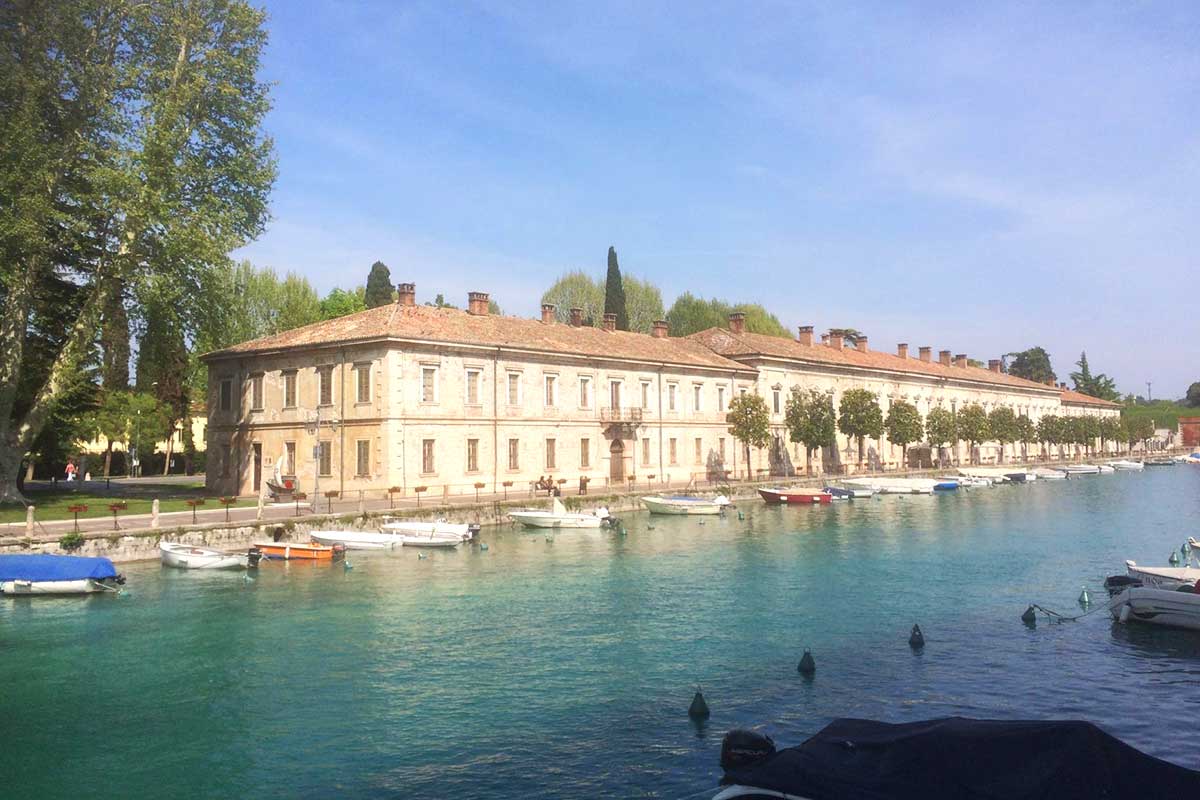
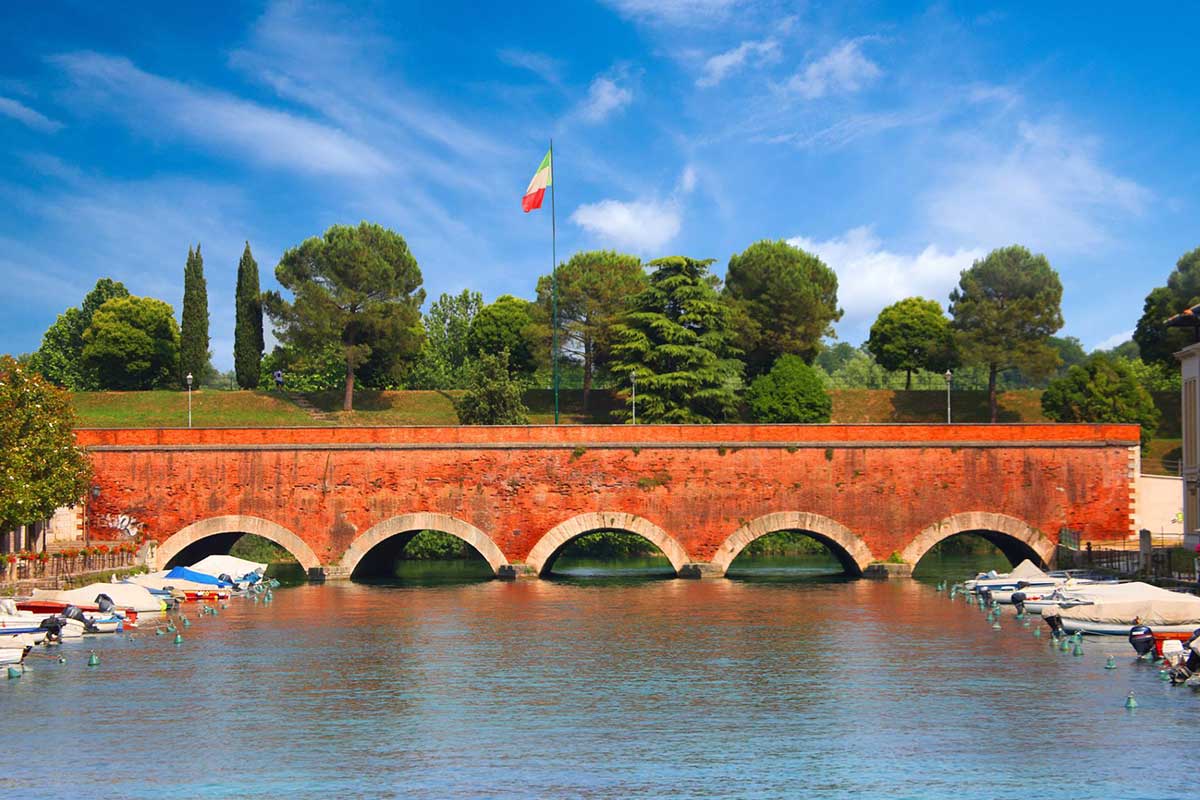
4. Voltoni’s Bridge
In 1556, the Ponte dei Voltoni was built and the now-famous five arches were introduced to the city. Jacobo Gauro, the Veneto governor, directed the design and building phases as soon as the fortress was constructed. Today, the house in Via Dante holds a commemorative plaque of Gauro’s name.
In the writings of the well-known Pliny the Elder, during the Roman era, he spoke of fixed fishing stations…a key feature of Peschiera del Garda. One such station, Pescarezzo, can be seen after passing under the vault nearest to Piazza Ferdinando di Savoia.
While these stations are largely forgotten, one sign remains on Lake Garda and a guided boat tour service will get you to the recently restored building (it’s now a museum); it can also be seen from Lungolago Bonomi. The Ponte dei Voltoni has become symbolic of Peschiera del Garda and everything it has to offer so is well worth a visit on your Lake Garda wellness trip.
5. Piazza Ferdinando di Savoia
Dating back to 1,000 CE, the facade of the Church of San Martin can be found on the right; the church foundations have historic beginnings as, in the same location, the temple of Jupiter once stood. How do we know this? Well, the Roman remains of the ancient Peschiera confirmed the theory in the adjoining excavations. Although we can’t be specific, the ruins are thought to date back to the 3rd/4th centuries CE.
Looking opposite, we find the southern side of the square and the Rocca, an ancient complex which experienced military intervention by Scaligeri (between 1275 and 1385) numerous times during the Roman period. During the Veneto period, widely considered to be 1550 to somewhere in the 1700s, a renovation saw the birth of Porto Arsenale.
In the Habsburg period, the arsenal port was actually covered and the square completed (you’ll notice the buildings looking onto it). As we continue left from Piazza Ferdinando di Savoia, we come across the Canale di Mezzo.
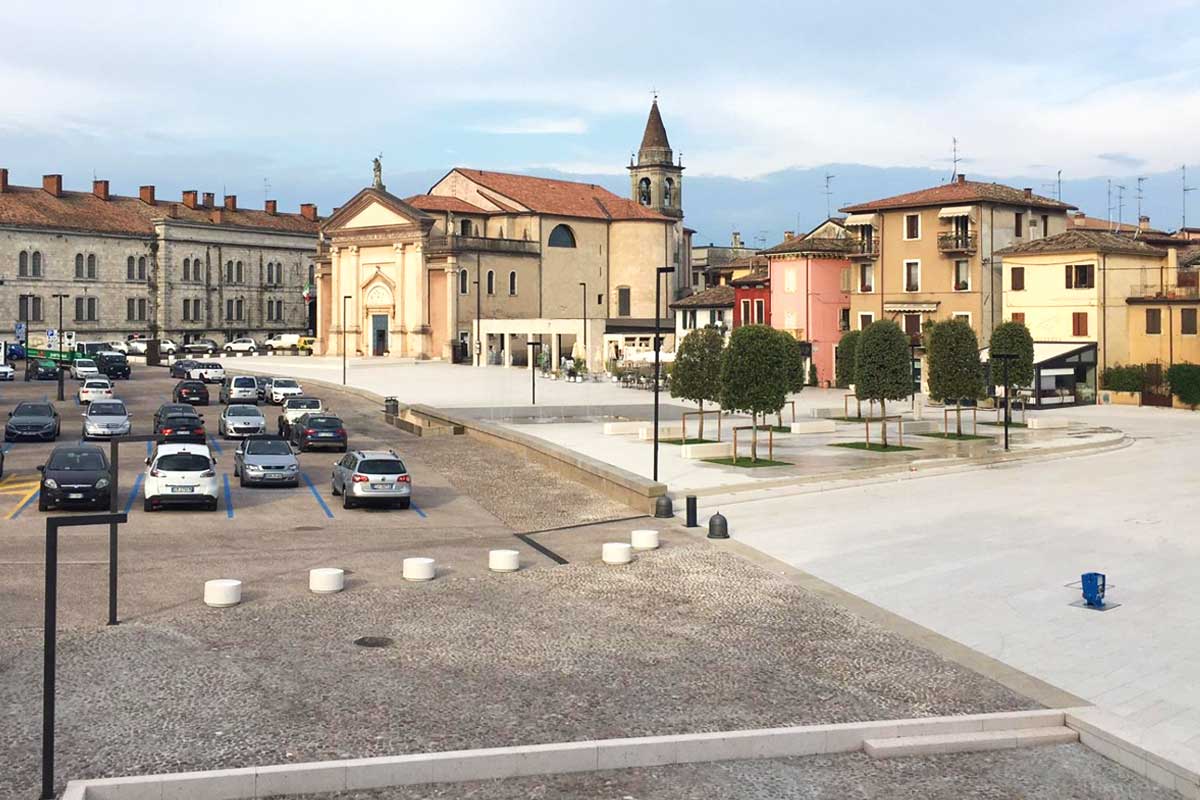

6. Former Artillery Barracks
On the other bank of the Mincio, and on the other side of the Ponte dei Voltoni, stands the artillery barracks of the Habsburg military quarter. With this in mind, we start to enter the old Habsburg military quarter (located inside the Venetian fortress).
If you look behind, the Habsburg army once used the white marble courtyard, in Galleria Austriaca, to store munitions. Back to the front, the Francesco 1st Barracks and the palace of the commander can be seen to the left and behind of Parco Catullo respectively.
7. Bastione San Marco
On the left after entering the main courtyard, you’ll be at the wall of the Bastione San Marco. From the Venetian pentagonal walls of 1553, the second (in order of building) is still considered to be in great condition for a technical military structure. On a walkway above Porta Verona, you’ll stand on one of the strategic spots designed to control the eastern front.
As you travel this wall, you’ll admire a view that brought both beauty and heartache for Peschiera. On the southern side, it was the front of all sieges during the Risorgimento and during the Napoleonic wars.
In 1944, during World War II, the bridge in front of us was damaged from bombings. Soon after, it was rebuilt and it still plays an important role in the Milan-Venice railway, Elsewhere, you may notice the wall of the Venetian fortress where the Bastione Cantarane stands, and the back of the Ponte dei Voltoni.
In addition to the rebuilt bridge constructed during the Habsburg rule, there’s also another important feature of the city here damaged by World War II; this time it was destroyed completely and it was the Regio Stabilimento Ittiogenico. After leaving the courtyard, the right-hand side will show the opening of Porta Verona.
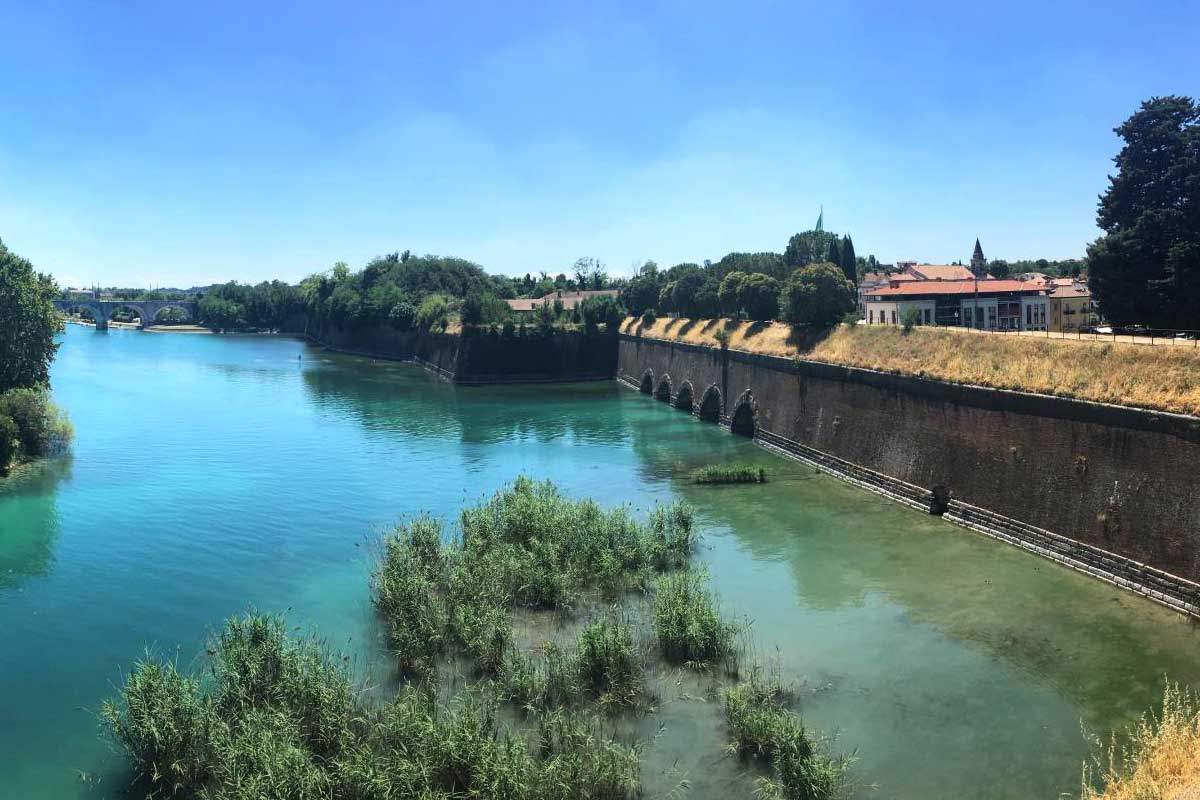

8. South view of the fortress
Before us, we now see the rebuilt bridge (after the bombing of 1944), which joins the route of the Milan Venice railway, constructed in the period of Habsburg rule. In addition, as shown in the diagram, you can see the Regio Stabilimento Ittiogenico destroyed by bombing in World War II.
You can also notice the back of the Ponte dei Voltoni, and the wall of the Venetian fortress, up to the most distant side, where the Bastione Cantarane stands. You then leave the courtyard, and immediately on the right, we enter the opening of Porta Verona.
9. Porta Verona
The first special thing to note here is the absence of the St Mark’s Lion-like symbol in the centre of the gate; the gate itself is still impressive. Once the treaty of Campoformio had passed in 1797, this image that symbolised the Republic of Venice was soon destroyed in a message of contempt by Napoleon. At the start of the bridge, you’ll be able to see how the gate would have looked when it had pride of place thanks to a brilliant reconstruction.
If we keep to the right as we return to the city, we start to see the Francesco Primo Barracks of 1822 as well as the Parco Catullo - the former is now a school for the police force while the latter is the perfect location for Peschiera del Garda yoga.
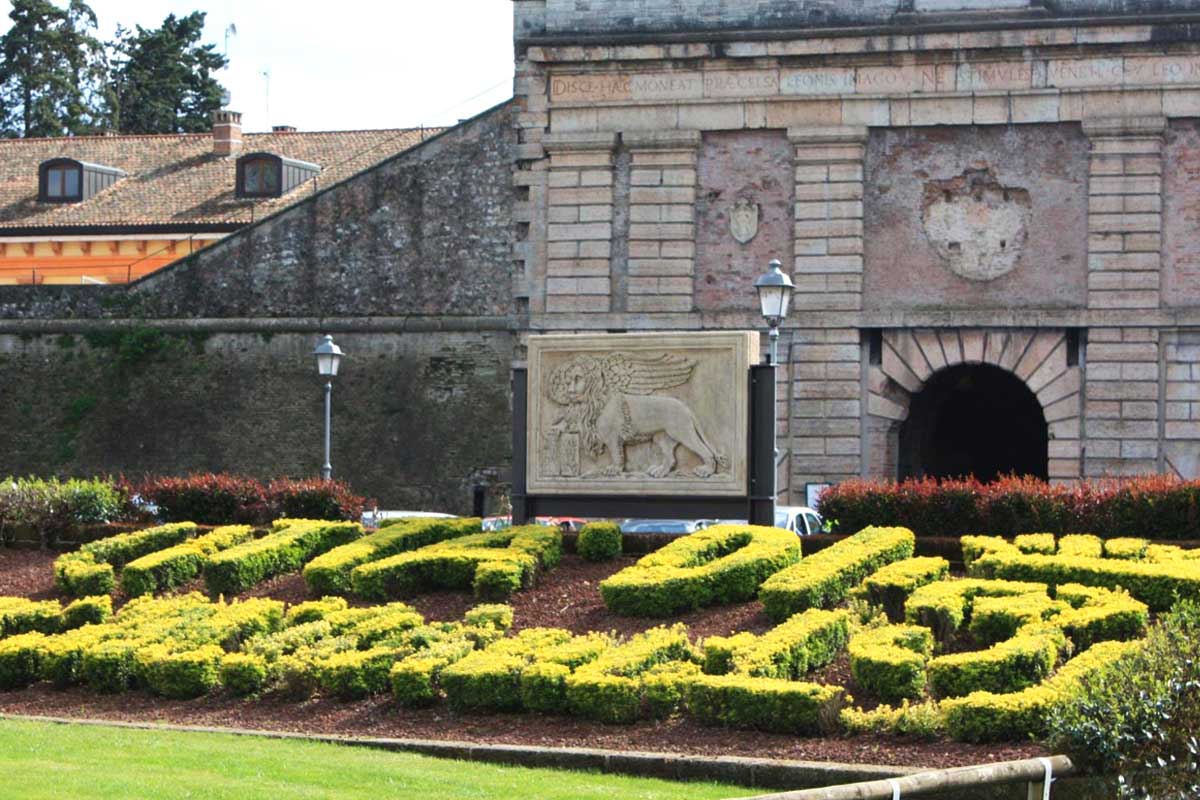
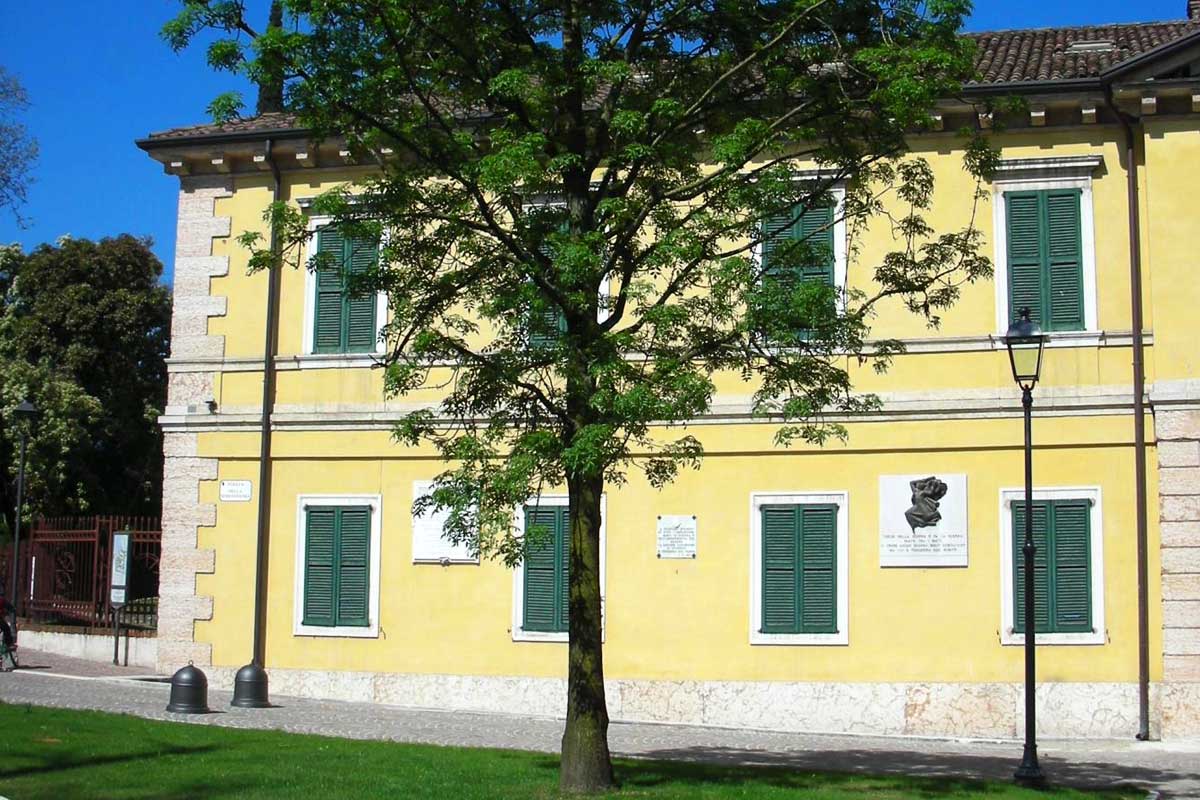
10. Catullo Park
Once called Trans Mincio (in medieval times), Parco Catullo is our next destination and this was once critical for the community because it was a place where vegetables would grow for everybody in the fortress. The Palazzo Comando di Piazzaforte headquarters from the middle of the 19th century is now in front of us.
During World War I, an inter-allies conference took place in 1917 and it eventually changed the course of history by being the beginning of the end. A monument to this meeting houses the museum which dedicates its walls to this very meeting called by Victor Emanuel III (King of Italy).
With all the allied forces’ commanders together, the king attempted to explain that the Italian Army could aid the strategies that brought victory in the Great War, despite the Caporetto defeat.
11. Parade Grounds Command Building
For the history lovers among us, the Convention of 1917 was held in the ‘Historical Building’ or ‘Parade Grounds Command Building’. Furthermore, further along the Channel di Mezzo, opposite the park, you’ll find the Official’s Pavilion.
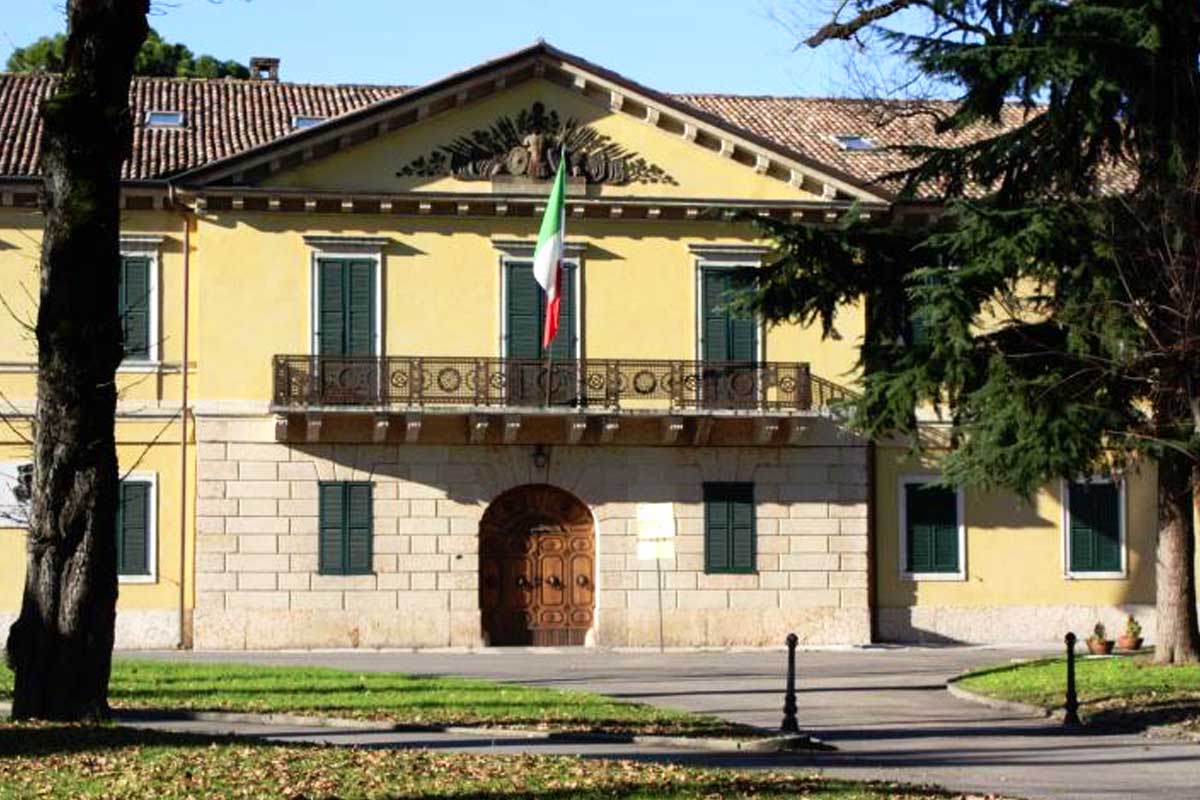
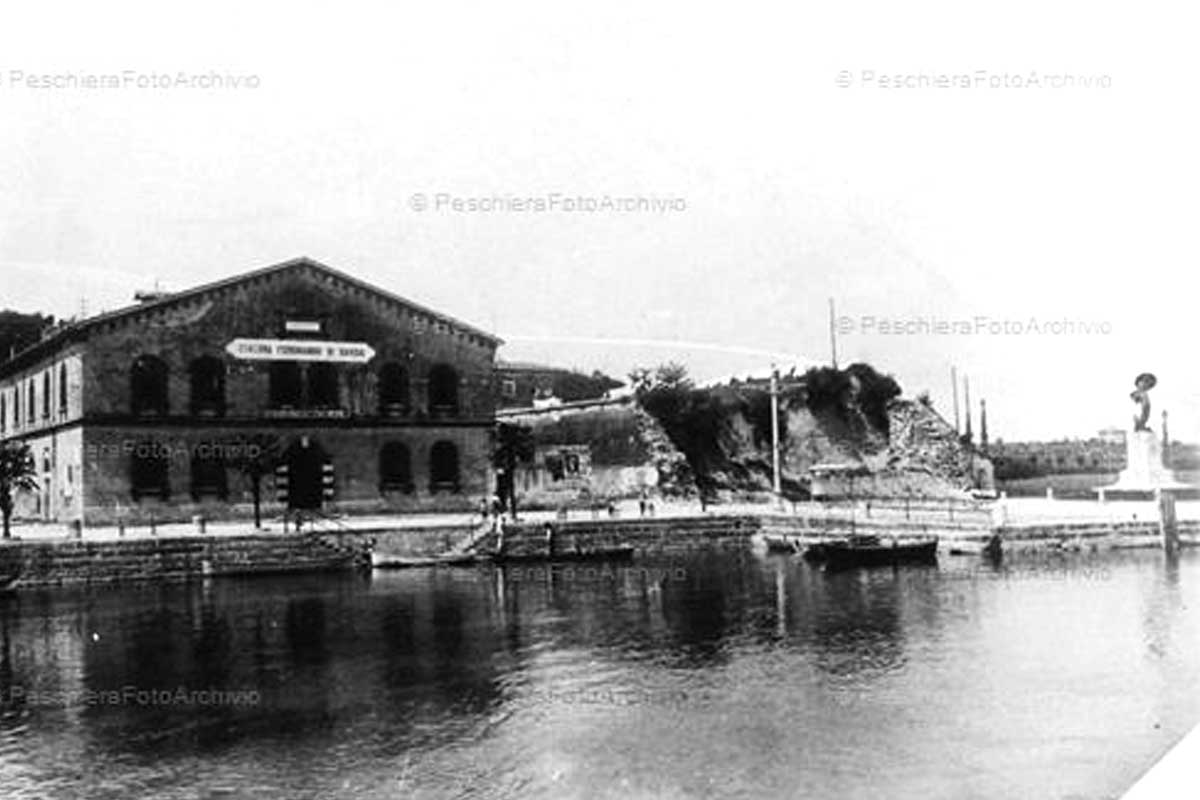
12. Ancient Port of Peschiera
Unfortunately, the site today looks very different from photos you’ll see from the past and this is because the walls that once existed in the 19th century have since been demolished. Around 1910, the city underwent a modernization process which saw the walls destroyed. Now situated towards the entrance of the Town Hall, the Lion of Saint Mark effigy was previously located on the north side of the fortification. The PadiglioneUfficiali is opposite the street.
13. Bastione Querini
While moving from the lake, which provides a sensational setting for Lake Garda yoga these days, there were two side entrances to the fortress and one of these is at the Bastione Querini. When the twin bastion was active, these entrances allowed not only boats but also crafts…until the 1906 destruction. Just as before, images by Bazzoffia Alessandro, the architect, will highlight just how the Bastions of Peschiera del Garda were built and why they played an important role in society.
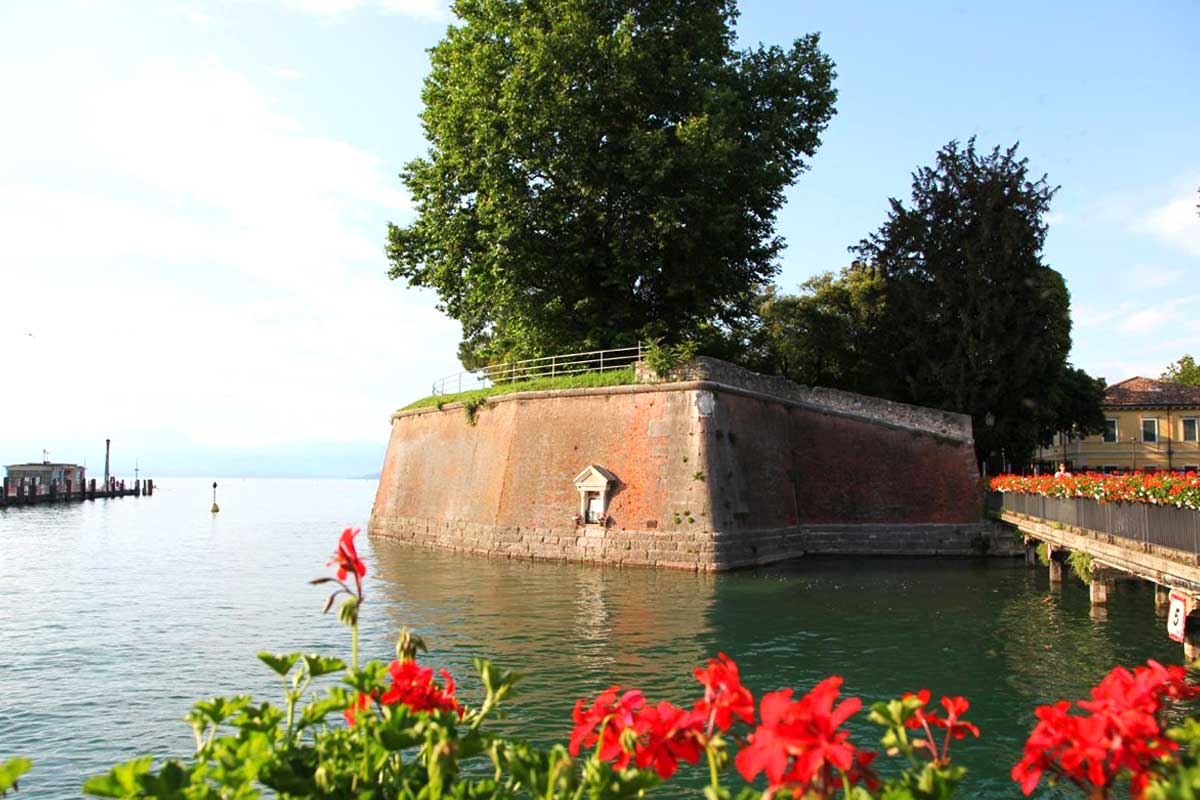
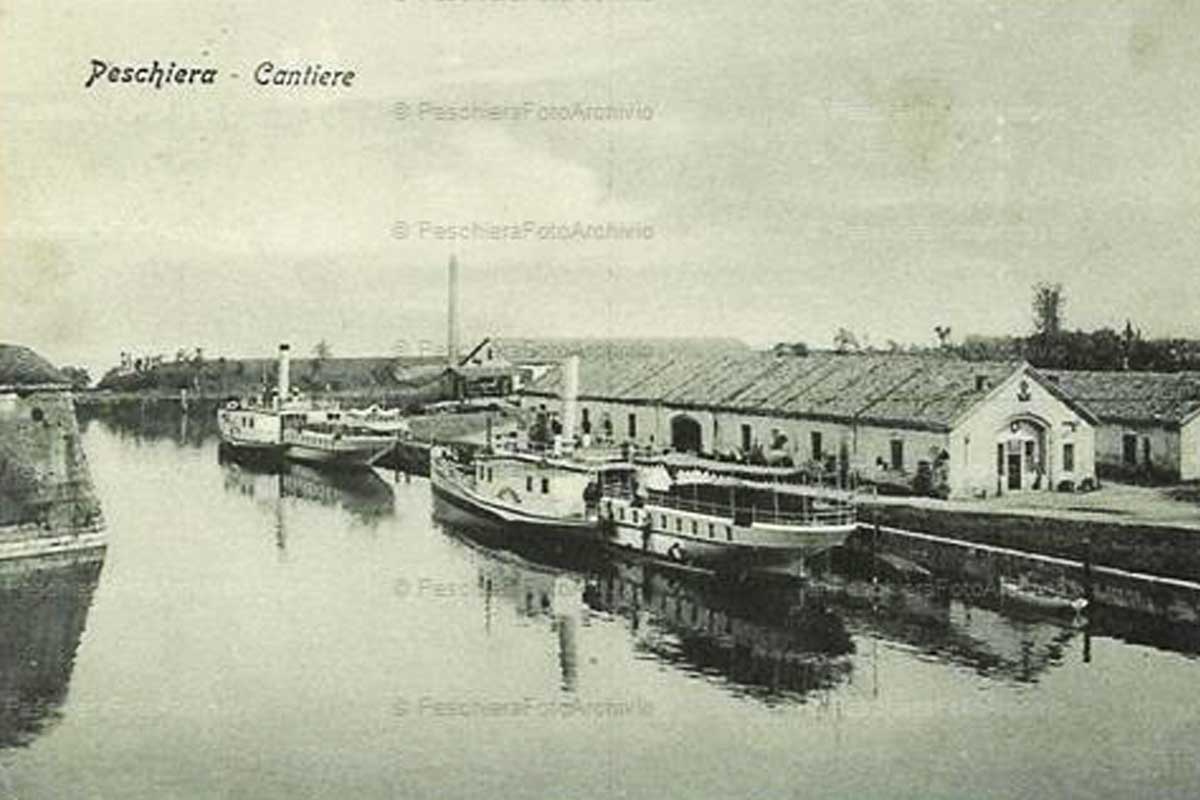
14. Shipyard
As we near the end of our tour, we can now see the shipyard as well as the still active Zanardelli motorboat; this still functions on the Navigarda line and forms part of the scheduled service. For the city’s economy, the shipyard was pivotal and it allowed for much development in Peschiera del Garda - one reason why we’re able to visit for our Lake Garda wellness needs today. ControBastioneTognon is located on the other side as you cross the port.
15. Bastione Tognon
Dating right back to 1552, Bastione Tognon is the fifth of the Venetian fortresses and, if you remember the Lion of St Mark we discussed earlier, which was destroyed by Napoleon, you’ll see visible remains of the lion here.
Although important throughout time, the Austrian Army found particular use of this area and even installed an optical telegraph in a special building. Suddenly, three main locations in town had the tools to communicate for the first time; the centre of command in Verona, the fortress of Peschiera, and Pastrengo fort. For many years, the hills presented a huge problem for communication but the telegraph bypassed this and a triangulation was created.
Furthermore, to block naval incursions, Pastrengo fort was also connected with the artillery system of Punta San Virgilio.
Although important throughout time, the Austrian Army found particular use of this area and even installed an optical telegraph in a special building. Suddenly, three main locations in town had the tools to communicate for the first time; the centre of command in Verona, the fortress of Peschiera, and Pastrengo fort. For many years, the hills presented a huge problem for communication but the telegraph bypassed this and a triangulation was created.
Furthermore, to block naval incursions, Pastrengo fort was also connected with the artillery system of Punta San Virgilio.

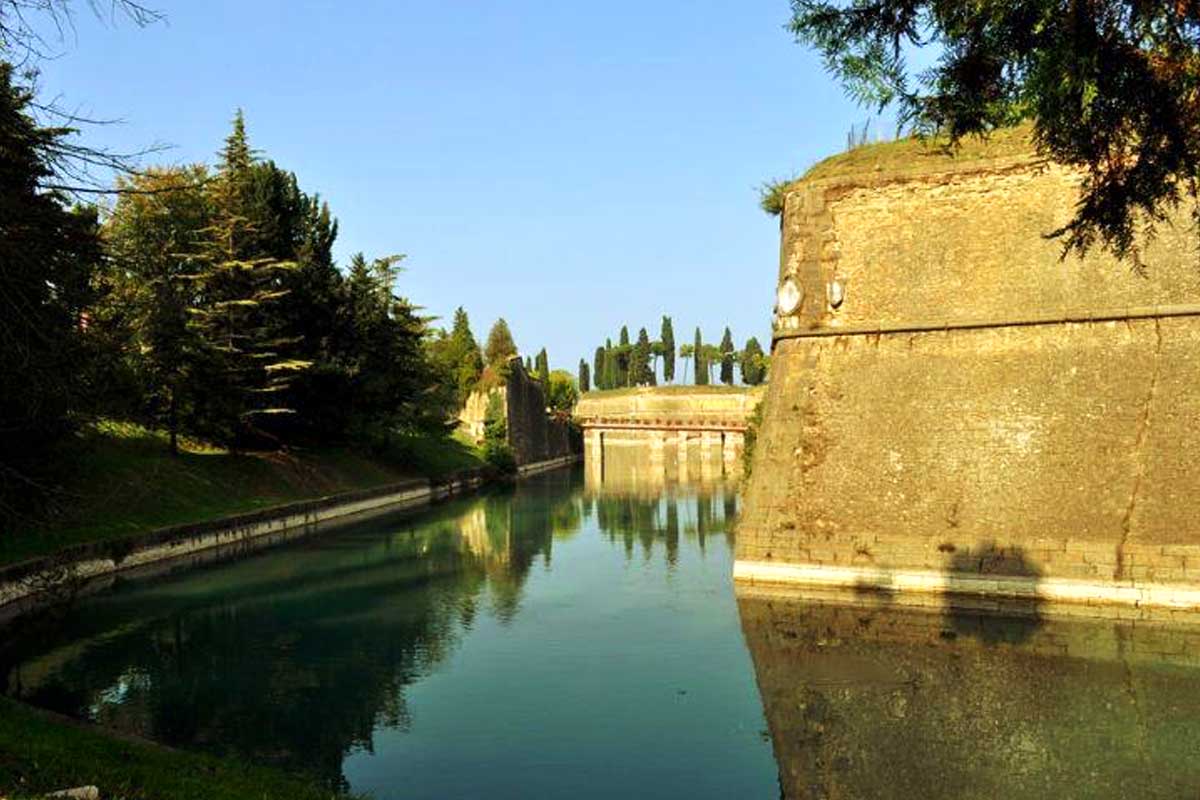
16. Feltrin Bastion
Finally, we come across the first part of the fortress to be built - the Western section. Although hidden somewhat from the city centre, the Porta Brescia provides a brilliant vantage point - you’ll quickly see the missing part of the Bastion. As maintenance work was carried out on the canal in 1935, part of the structure actually collapsed.
Soon after, restoration was required and the wall needed to be reinforced (after the canal was emptied). Considering the restoration was so expensive, and the whole structure would need to be reinforced, the decision was made to not rebuild the original wall. Instead, the builders looked to the embankment around the collapsed walls to build terraces.
If you want to see the difference, a before and after, photos of the Bastion collapse can be found in the Museum of Fishing and Local Traditions. With Peschiera del Garda fully explored, we now reach the end of our tour and it’s easy to see why this Lake Garda yoga retreat provides a superb setting for all your needs!
Soon after, restoration was required and the wall needed to be reinforced (after the canal was emptied). Considering the restoration was so expensive, and the whole structure would need to be reinforced, the decision was made to not rebuild the original wall. Instead, the builders looked to the embankment around the collapsed walls to build terraces.
If you want to see the difference, a before and after, photos of the Bastion collapse can be found in the Museum of Fishing and Local Traditions. With Peschiera del Garda fully explored, we now reach the end of our tour and it’s easy to see why this Lake Garda yoga retreat provides a superb setting for all your needs!
LAKE GARDA YOGA RETREATS
BOUTIQUE SPA RETREAT
SCENIC AGRITOURISM RETREAT
Follow us
© 2023 Perumal Koshy | All Rights Reserved
© 2024 Perumal Koshy | All Rights Reserved




